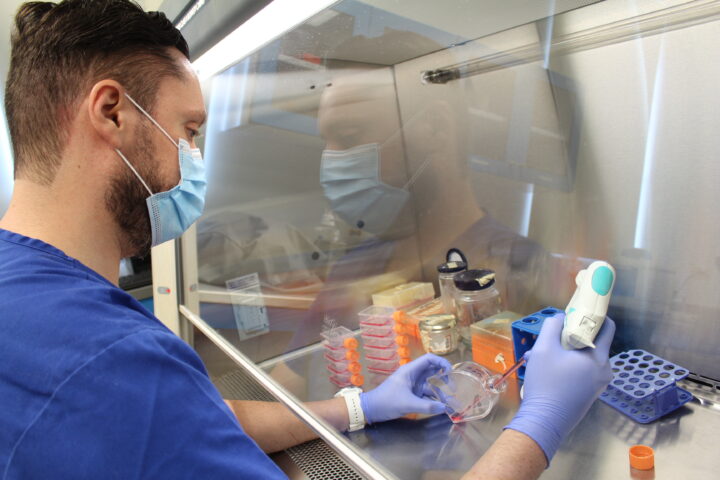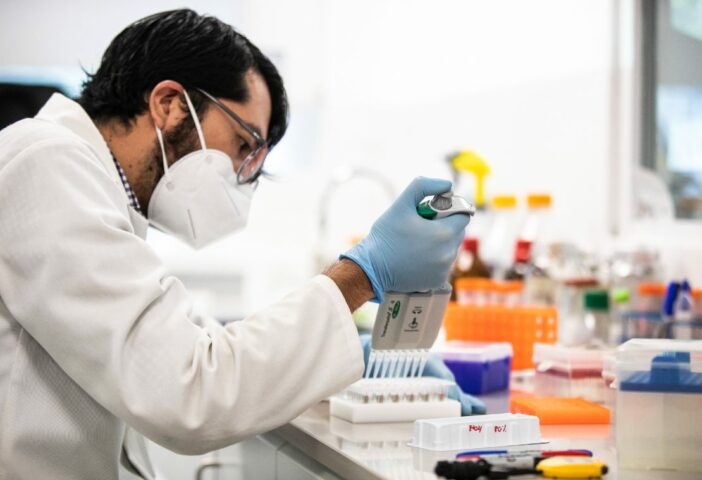When we hear the word clitoris, many of us think of a small organ that is part of the female reproductive system, but what we can see is only the visible part of a kingdom hidden beneath our skin.
Although it is part of the bodies of 49.5% of the human population, the information we have about it was scarce until just over 30 years ago, and today, it still does not reach a large part of our societies.
Clitoris: Characteristics and Function
For reasons that are not completely clear, for many years, this organ was ignored in human anatomy textbooks and scientific research about it was minimal.
“When I was studying to become a young surgeon we had to use this particular textbook, and the fact that the clitoris was missing all together was like a beacon that there was something very, very wrong,” says Helen O’Connell, urologist and researcher at the Department of Surgery at the University of Melbourne, Australia, in an interview with TecScience.
In 1993, disappointed by the lack of information, O’Connell was preparing to take her final exams to specialize in urology and took a course from pediatric surgeon John Hudson, who spoke about the importance of preserving the nerves associated with the clitoris in intersex surgeries. The fact that he placed so much importance on it gave the young surgeon hope.
In Hudson, O’Connell found an ally who, as her doctoral advisor, supported her in conducting the first studies focused on defining the complete anatomy of the clitoris, making dissections and observations of tissues extracted from the corpses of organ donors.
“What really struck me was how amazingly guarded the clitoris is by the pubic bone and muscles of the thigh,” says O’Connell.
Using magnetic resonance imaging (MRI), she also complimented her work by examining, along with John DeLancey, the clitoris of a group of women. Little by little, her studies revealed a sensory universe with a shape that, seen from a certain angle, is incredibly similar to that of an orchid.
O’Connell was a pioneer in the comprehensive study of the clitoris and discovered that it is a complex organ, much larger than the tissue we can see with the naked eye. Almost 90% of its total volume is under the skin.
The visible part is called the glans and is 4 to 5 millimeters long. From it, the corpus cavernosum extends inward into two long structures, called crus, composed of erectile tissue -known in medicine as spongy tissue- that surrounds the urethra and the vagina.
Beneath the crus are the bulbs, also made of erectile tissue, which extend to the sides behind the vaginal walls.
“In total, if we measure it from the tip of the glans to the end of each root, the clitoris measures around 10 to 15 centimeters long,” says Alejandra Salcedo, an obstetrician-gynecologist specialized in gynecological urology at the School of Medicine and Health Sciences from Tec de Monterrey.
Like the penis, its male counterpart, the clitoris is full of nerve endings, and receptors for touch and vibration. The female organ has around 8,000 nerve endings, while the male organ has between 4,000 and 6,000.
This makes the clitoris a highly sensitive area that -like a button- when it’s stimulated, it ignites the dilation of the blood vessels and the action of the bulbocavernosus muscles, which increase the bloodflow that reaches it, causing the entire organ to enlarge.
“During sexual arousal, it can expand up to three centimeters more than its normal size,” explains Salcedo.
Throughout our lives, the clitoris remains relatively the same size, except for the bulbs. In harmony with our biology, these grow during our reproductive years, but before and after that they are relatively small.
“These [sexual] parts of our bodies are very sensitive to hormonal changes,” explains O’Connell.
A Single Function
Its structure and all of its connections make the clitoris an highly specialized organ in its one and only function: generating sexual pleasure. “Unlike the penis, it is not involved in passing urine or in reproduction,” says Caroline de Costa, an obstetrician-gynecologist and researcher at James Cook University, Australia.
When the clitoris is stimulated, it sends pleasure signals to the brain through the pudendal nerves. These, in combination with psychological factors, such as the connection with our sexual partner or memories of previous experiences, can lead to an orgasm. “This climax actually takes place in the brain,” explains De Costa.
The orgasm is a natural reward system present in all human beings. “It’s like a biological drug, without side effects,” says O’Connell.
By releasing different neurotransmitters and hormones, such as dopamine, oxytocin and vasopressin, sexual pleasure has many health benefits, from psychological ones –such as reducing anxiety– to physical ones –such as improving sleep quality.
However, the experts warn that this is not the only way women can experience sexual pleasure. “A lot of times we see the orgasm as a goal, because we compare it with male ejaculation, but in women sexual pleasure is actually very dynamic,” says Salcedo.
A Forgotten Organ
Although the clitoris is a natural part of the female body intended to make us enjoy our sexuality, a large number of health experts and scientific researchers feel uncomfortable discussing or studying it.
De Costa realized this when, in 2020, she got O’Connell to write an editorial about the clitoris in the journal she edits, the Australian and New Zealand Journal of Obstetrics and Gynecology.
To her surprise, when the editorial was published, it was not included in the blog that the magazine normally sends to other colleagues to share their most recent publications.
“It was just too embarrassing for the male president [of the magazine] to send anything about the clitoris to his fellow obstetricians and gynecologists,” says De Costa.
O’Connel, De Costa and Salcedo consider that this responds to the male centric view that has reigned our world. Furthermore, there are a lot of taboos and shame around women’s sexuality.
“The idea that women would simply have sex for pleasure is one which has been combated by many religions and societies around the world,” says De Costa.
But if this doesn’t explain it, one might think that the fact that much of this organ is hidden from view might be a reason. “But we know we have kidneys, a stomach and intestines and we give them great importance even though we can’t see them,” De Costa continues.
The fact that it only has that one function could be behind it being rejected. “For some odd reason, when it comes to female sexuality, we seem to have to justify it and link it to a reproductive function,” O’Connell explains. This enjoyment is rarely questioned when it comes to the male sex.
According to the researchers, these ideas have permeated society so much that today there are still women who endure sexual mutilation, a surgery that frequently includes the clitoris being removed, erased, forgotten.
Sexual Pleasure for All
But not everything is as bad as it sounds. Over the years, O’Connell and De Costa have happily observed that there are more and more people interested in spreading the word about this organ, as special as it is controversial.
Now, there are articles, books, teaching materials and 3D models that accurately describe the anatomy of the clitoris and are accessible to everyone.
“For me, speaking about the clitoris and sexual pleasure is not only about sexual rights, but also about the well-being and quality of life of women,” says Salcedo. In her office, she has treated patients with various sexual or urinary dysfunctions, but there is still a long way to go to give them the attention they deserve.
“In cancer patients, for example, we could find a way to return sensations to that organ after their treatment, but we still don’t fully know how it’s affected by radiotherapy or chemotherapy,” says Salcedo.
Although it is not a matter of life or death, enjoying our sexuality has the potential to improve our societies and the way we relate to each other.
“I invite women explore themselves and feel more and more comfortable with the positive side of this part of our body, because it is there to enhance our health, not the opposite” says O’Connell.
For her, de Costa and Salcedo, it is crucial that the entire society is aware about the clitoris and its function. “We need women, men, educators, scientists, doctors and disseminators to be able to talk about this body part without taboos or prejudices,” says Salcedo.
When people enjoy their sexuality, they are more likely to have wholesome and healthy relationships and better function as members of society, say the experts. Living a full, free, informed, safe and consensual sexuality can lead us into having fuller lives.
“For too long, it’s been very difficult for women to enjoy their sexuality,” says O’Connell. Let’s hope that, with these women as our guides and a deep understanding of our bodies, this era of shame will finally come to an end.


















